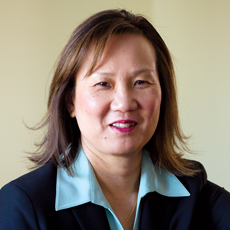
For over three decades, the Program of all-Inclusive Care for the Elderly (PACE) has maintained a stellar reputation as the only fully integrated Medicare and Medicaid program for nursing home eligibles that delivers coordinated care and achieves the Triple Aim. Most recently, at a July event celebrating the 50th anniversary of Medicare, Centers for Medicare & Medicaid Services Acting Administrator Andy Slavitt, visited the On Lok Program in San Francisco. He called PACE a “glimpse into our future.”
Today PACE has 115 programs in 32 states serving 35,000 beneficiaries. While existing PACE programs are growing and new PACE programs are being developed, this rate of growth will not make a dent in meeting the needs of the more than 9 million dual eligibles, many of whom have multiple chronic conditions and could benefit from PACE. In this time of interest in providing better care for dual eligibles, CMS has piloted many new models of care and will now allow for-profit PACE programs.
The National PACE Association (NPA) has estimated that PACE programs could serve 182,000 beneficiaries if the current programs are able to achieve the access and market penetration levels of PACE market leaders. Now is the time for all sponsors of PACE programs to maximize the opportunity to grow PACE – and to utilize the competencies gained by operating PACE programs to meet the unmet need for high quality coordinated care.
For-profit PACE programs seizing the opportunity
In June 2015, CMS opened the door to for-profit PACE sponsors when it submitted a study to Congress showing no difference in the costs and quality of care between nonprofit and for-profit PACE programs. Already the investor community is buzzing with ideas for how to scale PACE including jumpstarting growth from an adult day care platform, seeking joint ventures to achieve economies of scale in back office operations and analyzing market opportunities for multi-state PACE programs in urban and rural areas. The for-profit mindset is open to and looking for creative ways to scale PACE, improve care, reduce health care spending and earn a profit at the same time.
Many competitors are operational
Competitors to the traditional PACE model of care are multiplying in this time of innovation. These competitors include Dual Eligible Plans, Independence at Home Practices, Accountable Care Organizations (ACOs) and others. In particular, the Independence at Home Demonstration of home-based primary care showed significant savings of approximately $3,000 per year when caring for a population that is similar in frailty to PACE. PACE programs must continue to communicate their value proposition to beneficiaries and payers in this evolving competitive landscape.
CMS flexibilities are needed
CMS has been actively testing new models of care for dual eligibles and granting greater flexibilities, but has not yet adopted a similar approach to its regulation of PACE programs. The PACE community is waiting for CMS to publish a proposed rule that we hope will grant greater operational flexibility and reduce administrative burden. PACE programs, by their very nature, are locally based programs that have demonstrated success and commitment to fulfill the desires of seniors to be cared for at home. Yet even with this track record of success, CMS imposes many administrative burdens on PACE programs that increase costs and impede growth without improving the quality of care. For example, PACE programs must request waivers to utilize nurse practitioners and community physicians. Other Medicare Advantage and Financial Alignment Demonstration programs do not face similar administrative obstacles.
Disrupt yourself
In order to achieve scale, PACE sponsors should aggressively pursue expansion where demand exists and fully utilize all available flexibilities such as use of nurse practitioners, community physicians and alternative care settings.
PACE sponsors should actively explore business relationships with health plans, ACOs and employers where they can utilize their finely tuned care management capabilities to serve broader populations in partnership with others payers serving this patient population.
Traditionally, PACE sponsors have been more comfortable with the risk of caring for nursing home eligible populations using the PACE model than with variations in the PACE model of care. However, several PACE programs are leading the way. The Northland Health Care Alliance’s PACE program in North Dakota received a $2.7 million Round 1 CMMI grant to coordinate care for frail seniors in rural North Dakota. St Paul’s PACE program in San Diego has negotiated a contract with a Dual Eligible Plan to provide a package of services. Other PACE programs are also developing new partnerships and models that utilize PACE competencies.
PACE programs should consider partnering with:
-
A Medicare Advantage plan or a dual eligible plan to provide care management and home and community based services to the highest risk populations at home; consider taking risk for the care of these populations.
-
Continuing Care Retirement Communities to provide care management and services to patients wanting to remain at home. CCRCs have experience providing places of care for private pay seniors and could benefit from a partner that has provided these services at home.
-
Organizations serving the under 55 populations with disabilities in advance of the passage of the PACE Innovation Act S 1362 (which has passed the Senate).
The time to scale PACE is now. If you don’t, then new entrants will find a way to meet the needs of persons in your community who are frail and have chronic conditions and who are in need of high quality, coordinated, person-centered care.
Jade Gong, MBA, RN, is Principal at Jade Gong and Associates.





